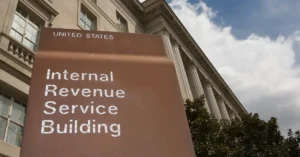Ever stared into a bowl of alphabet soup and wondered what all those letters mean? Well, welcome to the world of international taxation. In this realm, one such handful is PFIC, which stands for Passive Foreign Investment Company.
No need to glaze over just yet. It’s not as intimidating as it sounds – promise! Picture yourself standing at the foot of a mountain named PFIC, preparing for an exciting hike up its trails.
We’ll start our journey by unraveling exactly what a PFIC is and why you should care about it. Then we’ll navigate through the labyrinthine tax implications associated with these foreign investments before reaching the peak: effective strategies to handle them.
Fear not, I’m here to assist your ascent every step of the way. Ready? Let’s embark on this adventure together!
Understanding PFICs and Their Tax Implications
Passive Foreign Investment Companies (PFICs) might sound like a mouthful, but they’re actually pretty straightforward. A PFIC, at its core, is any foreign corporation that meets one of two tests: the Income Test or the Asset Test.
The first test considers whether 75% or more of the company’s gross income for its tax year is passive – think dividends, interest, and similar returns on investments. If it meets the criteria, then you’ve got yourself a PFIC.
If not though don’t worry because there’s still another chance with the Asset Test. This checks if at least 50% of average assets held by the foreign company during the tax year produce passive income or are held to produce such income.
What Does It Mean For Investors?
If you’re an American investor holding shares in a PFIC directly or indirectly through mutual funds, it can have significant implications come tax season.
This isn’t your run-of-the-mill capital gain situation where Uncle Sam just takes his cut when you sell off your investment for profit. Nope. This involves special rules that may increase your taxes substantially compared to domestic investments.
A Quick History Lesson…
You see, back in pre-1986 America, investing overseas was quite attractive as investors could defer taxation until repatriation, much like within Roth IRAs today. Congress, however, saw this as a lost revenue opportunity, so entered “The Tax Reform Act”. In came new laws targeting offshore companies, hence giving birth to our friend here…the Passive Foreign Investment Company.
What Now?
The bottom line is, that if you’ve invested in a PFIC (which most foreign mutual funds are considered to be), you need to get your tax situation sorted out. From figuring out whether Form 8621 applies to you, to understanding the ins and outs of excess distributions – it’s crucial that you fully comprehend these aspects. Doing so will not only help streamline your tax filing process but also ensure accurate reporting, keeping potential penalties at bay.
Key Takeaway:
investment process. Get to know PFICs well and they’ll become less intimidating, leading to smarter investment decisions. So, don’t let the tax complexity scare you away from foreign investing opportunities.
The Intricacies of PFIC Taxation Methods
Let’s dig into the complexities of Passive Foreign Investment Company (PFIC) taxation. Navigating this labyrinth can be like playing 3D chess, but with the right information and a sprinkle of humor, it’s as easy as pie.
Default Taxation Method
If you’re an investor in a PFIC, your default tax situation involves two key concepts: excess distribution and deferred taxes. Imagine excess distribution like overfilling a water balloon – it represents the portion that exceeds your regular return on investment.
The Internal Revenue Service (IRS), being our ever-observant referee, slaps interest charges onto these “excess” earnings if they’ve been idling away in some foreign mutual fund instead of participating in Uncle Sam’s economy. To get to grips with this concept further and calculate potential liability accurately, check out Instructions for Form 8621.
Mark-to-Market Election
Moving from excess distributions to Mark-to-Market (MTM) elections is akin to shifting gears while driving uphill; not always smooth but often necessary for progress. The MTM election lets investors use fair market value at year-end to assess their holdings’ worth.
In layman’s terms? You pay tax based on how much your shares would fetch if sold off at year-end – gains or losses included.
Gaining Insight Through Elections
You may wonder why anyone would want more complicated methods when there are simpler options available such as Qualified Electing Fund (QEF). But sometimes complexity brings clarity. A QEF election could allow you to avoid excessive IRS penalties by distributing income yearly rather than deferring it.
Each method has its pros and cons, like choosing between a stick shift or automatic car – each will get you to your destination but with different experiences along the way. A thorough understanding of these methods can help navigate PFIC taxation effectively, making tax season less daunting for investors in foreign corporations.
Key Takeaway:
how to navigate them is crucial. Just like in chess, each move can change the game entirely – understanding PFIC taxation isn’t any different. From Mark-to-Market elections to smart strategies such as yearly income distribution through QEF, you have options at your disposal. Sure, there are ups and downs with each method, but knowing which one suits your situation best could be a game-changer.
Navigating Compliance and Reporting Obligations
Dealing with PFICs isn’t just about understanding their tax implications. It’s also crucial to navigate the reporting obligations properly. Non-compliance can lead to hefty penalties, making an already complex process even more daunting.
The cornerstone of PFIC reporting is Form 8621. This form must be filed annually for each separate PFIC you hold if you received distributions or recognized a gain on disposition during that tax year.
Foreign mutual funds are often considered Passive Foreign Investment Companies (PFICS), adding another layer of complexity to your international investment portfolio. With additional filing requirements, these investments may need extra attention come tax season.
Filing Form 8621
To stay compliant with IRS rules regarding foreign investments, it’s vital to complete and submit Form 8621 correctly for each applicable PFIC every year. But this task can be intricate because it involves various calculations related to excess distributions and other transactions involving your shares in the fund.
If any changes occur within your holdings – such as selling off part or all of them – they should be reflected accurately in this document too. Failing here could trigger unwanted audits from the Internal Revenue Service (IRS).
Avoiding Penalties
Besides keeping up with annual filings, one must also make sure not to miss out on key deadlines associated with those forms since late submissions might incur penalties under U.S Tax Law which would put a dent into otherwise profitable returns from foreign investments like Mutual Funds.
Note: For help navigating compliance regulations around passive foreign investment companies (PFICs), reach out to a professional tax attorney. Remember, while dealing with PFICs can be tricky, the right guidance can make all the difference.
Key Takeaway:
Dealing with PFICs isn’t just about tax implications – it’s also about getting the reporting right. Don’t underestimate Form 8621, filed annually for each separate PFIC you hold. Foreign mutual funds often fall under PFICs, adding to your paperwork during tax season. Stay on top of changes in your holdings and make sure you meet deadlines to avoid any penalties or issues down the line.
Decoding PFIC Stock and Income
Digging into the realm of Passive Foreign Investment Companies (PFICs) can feel like decoding a complex tax puzzle. Let’s first tackle how to identify if your holdings in a foreign corporation qualify as PFIC stock.
Determining PFIC Stock
To understand whether you hold PFIC stock, we need to dive into some technical details. A foreign corporation is considered a PFIC if it meets either the income test or asset test.
The income test checks if 75% or more of the corporation’s gross income is passive. On the other hand, the asset test evaluates whether at least 50% of its assets are investments producing passive income or held for generating such an outcome.
It’s important to remember that these aren’t static tests; they’re evaluated annually. So even if your investment doesn’t meet these criteria one year, it might do so in another.
Taxation of PFIC Stock Sales
Moving on from identifying PFIC stocks, let’s focus on their taxation when sold—a significant factor impacting any shareholder’s holding period decision-making process.
Selling your shares triggers what we call an “excess distribution.” This includes any gain realized from selling shares plus certain large distributions received during ownership.
This excess distribution gets allocated across each day within your entire holding period then taxed as ordinary income—not just capital gains—at increasing rates depending on how long you’ve owned those shares before selling them off.
- Note: For American expats considering this route, be aware: The US tax law doesn’t favor PFIC stock sales lightly, and the excess distribution method can result in a higher tax bill than expected.
Key Takeaway:
Deciphering PFICs involves understanding if your foreign holdings qualify as PFIC stock. This is determined by annual income or asset tests, checking for passive income sources or assets producing such income. Selling these stocks can lead to “excess distribution”, taxed as ordinary income, potentially leading to higher tax bills.
Impact of PFICs on Specific Situations
If you’re an American expat or own shares in a foreign pension, understanding the implications of Passive Foreign Investment Companies (PFICs) is crucial. Let’s delve into some specific scenarios.
American Expats
American expats often face complex tax situations due to their overseas earnings and investments. Owning shares in a PFIC can add another layer of complexity to their expat taxes.
The IRS considers most foreign mutual funds as PFICs. Therefore, even if your investment seems like a standard mutual fund from the perspective of your resident country, it might be treated differently by U.S. tax laws.
Foreign Pensions and Insurance Corporations
Pension investments abroad can sometimes fall under the umbrella of PFIC regulations too. If these pensions invest heavily in stocks or securities rather than traditional retirement assets, they may qualify as passive foreign investment companies.
Qualifying insurance corporations also need to tread carefully around this area because certain life assurance policies with cash value are considered PFICS under U.S law.
Publicly Traded Companies
An indirect shareholder situation could arise for those investing in publicly traded companies that hold interests in one or more underlying PFICs. These investors become indirect shareholders through no fault but simply by holding stock in such companies.
Note: It’s not all doom and gloom. A special rule exists where individual investors who indirectly own less than $25K worth (or $50K for couples filing jointly) aren’t required to report it on Form 8621.
In a Nutshell…
PFICs can have different effects depending on the situation. The nature of these situations plays a significant role in this.
Key Takeaway:
Understanding PFICs is key for American expats and foreign pension owners. Even typical investments, like mutual funds or pensions invested in stocks, might be seen as PFICs by U.S. tax laws.
Effective Strategies for Dealing with PFICs
When it comes to dealing with Passive Foreign Investment Companies (PFICs), making informed decisions is key. The complexity of these investment structures can often be overwhelming, but don’t worry; there are effective strategies you can use.
The first strategy involves a QEF or Qualified Electing Fund election. By making this election, you opt to include your pro-rata share of the fund’s earnings in your gross income each year.
This approach lets you avoid the harsh tax treatment that generally applies to excess distributions from a PFIC. But remember, once made, a QEF election cannot be revoked without IRS consent.
Making Timely Elections
Avoiding punitive taxation on PFIC investments also hinges upon timely elections – specifically at the start of the holding period rather than later when an ‘excess distribution’ occurs or during disposition events like the sale of shares.
The catch here? You need access to sufficient information about the foreign corporation’s daily business activities and financial status – something not always readily available.
Understanding the Impact of PFICs on Your Tax Situation
Last but not least, understanding how PFIC rules impact your specific tax situation is crucial. For example, owning shares in a foreign corporation may influence various scenarios like American expats’ taxes or those holding pensions and insurance policies with overseas entities.
To wrap it up: dealing effectively with PFICs requires strategic decision-making coupled with professional guidance and an in-depth understanding of individual tax circumstances.
Key Takeaway:
Getting through the PFIC maze requires a smart blend of planning, timing, and expert advice. Choosing QEF elections can help you avoid severe tax penalties. But remember, it’s a one-time choice that needs IRS approval. Making decisions on time is crucial to dodge high taxes on your investments. For this reason, having reliable information about your foreign corporation’s operations and financial status becomes essential – though gathering such intel might not always be straightforward.
Tracing Historical Changes in PFIC Rules
The world of Passive Foreign Investment Companies (PFICs) has evolved over time, with the tax rules and regulations governing them seeing significant changes. The PFIC landscape has undergone a drastic transformation since its inception.
Overview of Historical PFIC Rules
In the early days, a company could be considered passive if more than 50% of its gross income came from investments or if at least half its assets were produced or were held for the production of passive income. But as financial landscapes shifted globally, these rules started to seem less effective.
The Tax Reform Act of 1986 brought about some major shifts. This legislation introduced special rules for taxation on excess distributions and marked the beginning journey toward today’s complex PFIC tax law.
Section 1297(a), also known as “the asset test”, played an important role in defining what constitutes a foreign corporation’s passive activity by introducing fair market value calculations into play.
Modernizing with Time: Current Scenario
Around this period, new concepts such as Qualified Electing Funds (QEFs) emerged which gave shareholders more control over their taxation methods during election years. As part of PFIC evolution, The Joint Committee on Taxation’s report provided valuable insights into this shift to the QEF regime and how it helped curb the abusive use of mutual funds as tax deferral vehicles.
| Era | Taxation Rule |
|---|---|
| Prior to 1986 | 50% Gross Income or Asset Test |
| Post-1986 Tax Reform Act | Introduction of Excess Distribution and Mark-to-Market Rules, QEF regime. |
| Till Present Day | Inclusion of Fair Market Value in asset test, increased reporting requirements. |
The rules surrounding PFICs are frequently updated by the IRS, keeping taxpayers on their toes.
Silver Tax Group: Your Foreign Investment Taxation Guide
So, we’ve traversed the mountainous terrain of PFICs together. You’re now equipped with a better understanding of what they are and how they impact your tax situation.
We explored the complex taxation methods associated with these foreign investments – default, Mark-to-Market (MTM), and Qualified Electing Fund (QEF). Remember that selecting prudently can have a considerable effect on your financial outcome.
You’ve also learned about the importance of accurate reporting when it comes to PFICs. Keeping up with compliance requirements like Form 8621 will help you avoid penalties.
Finally, don’t forget: if this still feels overwhelming or confusing at times – that’s okay! Silver Tax Group can offer invaluable assistance in navigating these intricate rules. Contact us today!
Passive Foreign Investment Company (PFIC) Frequently Asked Questions (FAQs)
What is a Passive Foreign Investment Company (PFIC)?
A PFIC is any foreign corporation that meets either the Income Test (75% or more of gross income is passive) or the Asset Test (at least 50% of average assets produce passive income or are held for such production).
What are the Tax Implications for American Investors in PFICs?
American investors holding shares in PFICs, directly or indirectly, face special tax rules that may significantly increase their taxes compared to domestic investments, involving excess distributions and deferred taxes.
What is the History Behind PFIC Taxation?
PFIC taxation emerged from the Tax Reform Act of 1986, which introduced laws targeting offshore companies to prevent tax deferral on foreign investments, similar to Roth IRAs.
What are the Different Taxation Methods for PFICs?
PFIC taxation methods include the default method involving excess distribution and deferred taxes, the Mark-to-Market election for assessing holdings' year-end value, and the Qualified Electing Fund (QEF) election for yearly income distribution.
How Do Compliance and Reporting Obligations Affect PFIC Investors?
Investors must file Form 8621 annually for each PFIC they hold, reflecting distributions, gains, and changes in holdings. Non-compliance can lead to penalties, making accurate reporting crucial.
How Do You Determine if a Stock is a PFIC Stock?
To determine if a stock is a PFIC stock, assess if the foreign corporation meets the income test or asset test annually. This involves checking for passive income sources or assets producing such income.
What is the Impact of PFICs on American Expats and Foreign Pensions?
American expats and foreign pension owners need to understand PFIC implications, as most foreign mutual funds and certain pensions and insurance policies are considered PFICs under U.S. tax laws.
What are Effective Strategies for Dealing with PFICs?
Effective strategies include making a Qualified Electing Fund (QEF) election, timely elections at the start of the holding period, and understanding the impact of PFIC rules on individual tax situations.








